Bioinformatics Graduate Student (1967 -)
-)
ploriaux@nullbioinf.ucsd.edu
Office: NSB 4318
Phone: 858-822-4673
B.S. Bioengineering, Univ. of Washington 2001
M.S. Computer Science & Engineering, Univ. of California San Diego, 2011
Research Interests
My current research interests are in understanding the molecular mechanisms that process information in living cells. Cell systems represent a particular challenge in this regard in that their machinery is capable of operating over many orders of magnitude in both space and time. Computational modeling is particularly suited to making conjectures about how systems operate over a high dynamic range in these domains, and these conjectures can then be verified or refuted in the laboratory. Presently I am constructing a model of concurrent activation of the JNK and NF-kappa B signaling pathways, with the goal of understanding how the basal state of the system biases the cellular response towards one or the other of these two contradictory signals. The results could have implications to our basic understanding of why different cell types respond differently to the same set of inflammatory and apoptotic signals.
Publications
| Citation |
Link |
Of elections and cell-death decisions.
Loriaux P, Hoffmann A.
Mol Cell. 2009 May 15;34(3):257-8. |
PubMed |
A framework for modeling the relationship between cellular steady-state and stimulus-responsiveness.
Loriaux PM, Hoffmann A.
Methods Cell Biol. 2012;110:81-109. |
PubMed |
Characterizing the Relationship between Steady State and Response Using Analytical Expressions for the Steady States of Mass Action Models.
Loriaux PM, Tesler G, Hoffmann A.
PLoS Comput Biol. 2013 Feb;9(2):e1002901. |
PubMed |
A protein turnover signaling motif controls the stimulus-sensitivity of stress response pathways.
Loriaux PM, Hoffmann A.
PLoS Comput Biol. 2013 Feb;9(2):e1002932. |
PubMed |
Biomedical Sciences Graduate Student (2011-2013)
 j0huang@nullucsd.edu
j0huang@nullucsd.edu
Office: NSB 3320
Phone: 858-822-4673
B.S. Chemistry, Cornell, 2007
Research Interests
My research interests are to study the pleiotropic effects of drugs on the dynamic regulation of NFkB signaling system using both biochemical assays and single cell experiments. Using a systems pharmacology approach, the goal is to determine a combination of chemical perturbations which could yield specific target effects on gene expression.
Publications
| Citation |
Link |
Control of self-assembly of lithographically patternable block copolymer films.
Bosworth JK, Paik MY, Ruiz R, Schwartz EL, Huang JQ, et al
ACS Nano. 2008 Jul;2(7):1396-402. |
PubMed |

Biomedical Sciences Graduate Student (2007-)
kfeldman@nullucsd.edu
Office: NSB 3320
Phone: 858-822-4673
B.S. Biology and B.S. Molecular and Microbiology
University of Central Florida 2007
Research Interests
I am examining the effects of different bacterial pathogens on the dynamics and kinetics of the NF-kappaB signaling network. Through these investigations I hope to learn more about how pathogens might alter or disrupt host cell signaling and how different pathogens might elicit different immune responses.
Publications
Cheng CS, Feldman KE, et al. The Specificity of Innate Immune Responses Is Enforced by Repression of Interferon Response Elements by NF-B p50. 22 February 2011. Science Signaling. 4 (161), ra11.
http://www.ncbi.nlm.nih.gov/pubmed/21343618
Bioinformatics Graduate Student (2009-)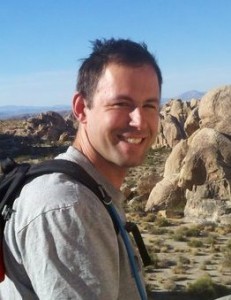
Office: NSB 4418
Phone: 858-822-4673
B.A. in Molecular Biology, Princeton University 2004
Fellow, National Science Foundation Graduate Research Program
Research Interests
I am interested in the coupling between transcriptional elongation and splicing. In addition to modeling, I am pursuing a high-throughput assay of splicing events in pathogen response genes.
Publications
| Citation |
Link |
Control of RelB during dendritic cell activation integrates canonical and noncanonical NF-κB pathways.
Shih VF, Davis-Turak J, Macal M, Huang JQ, Ponomarenko J, Kearns JD, Yu T, Fagerlund R, Asagiri M, Zuniga EI, Hoffmann A.
Nat Immunol. 2012 Dec;13(12):1162-70. |
PubMed |
Human-specific transcriptional networks in the brain.
Konopka G, Friedrich T, Davis-Turak J, Winden K, Oldham MC, Gao F, Chen L, Wang GZ, Luo R, Preuss TM, Geschwind DH.
Neuron. 2012 Aug 23;75(4):601-17 |
PubMed |
Transcriptional architecture of the primate neocortex.
Bernard A, Lubbers LS, Tanis KQ, Luo R, Podtelezhnikov AA, Finney EM, McWhorter MM, Serikawa K, Lemon T, Morgan R, Copeland C, Smith K, Cullen V, Davis-Turak J, Lee CK, Sunkin SM, Loboda AP, Levine DM, Stone DJ, Hawrylycz MJ, Roberts CJ, Jones AR, Geschwind DH, Lein ES.
Neuron. 2012 Mar 22;73(6):1083-99 |
PubMed |
A multiplex RNA-seq strategy to profile poly(A+) RNA: application to analysis of transcription response and 3′ end formation.
Fox-Walsh K, Davis-Turak J, Zhou Y, Li H, Fu XD.
Genomics. 2011 Oct;98(4):266-71 |
PubMed |
Tauopathy with paired helical filaments in an aged chimpanzee.
Rosen RF, Farberg AS, Gearing M, Dooyema J, Long PM, Anderson DC, Davis-Turak J, Coppola G, Geschwind DH, Par JF, Duong TQ, Hopkins WD, Preuss TM, Walker LC.
J Comp Neurol. 2008 Jul 20;509(3):259-70. |
PubMed |
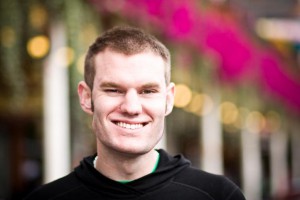 Chemistry and Biochemistry Graduate Student (2008-)
Chemistry and Biochemistry Graduate Student (2008-)
abcaldwe@nullucsd.edu
Office: 858-822-4673
B.S. Chemistry, Biochemistry,Seattle Pacific University, 2008
Research Interests
I am interested in the mechanisms of IKK activation and regulation in NFκB signaling.
Biology Graduate Student (2007-)
jalmaden@nullucsd.edu
Office: NSB 3320
Phone: 858-822-4673
B.S. Biochemistry and Cell Biology, UCSD
Research Interests
B-cells undergo dramatic expansion during immune response, which involves one of the most rapid proliferation rates known for mammalian cells. B-cell survival and death is highly regulated, and the proliferative program is limited to about 12 divisions.
The NF-kB signaling system plays a critical role in B-cell biology. Two distinct NF-kB activation pathways have been described to induce overlapping sets of NF-kB transcription factors containing the three activation domain containing NF-kB proteins, RelA, RelB, and cRel. My research is focused on understanding which NF-kB dimers control B-cell survival and proliferation. This study is complicated by the overlap of these two B-cell processes, as well as the interdependencies of NF-kB dimers produced by the NF-kB signaling system in response to B-cell activating signals. Using a combination of in depth experimental analysis and mathematical modeling, at both the cellular and molecular levels, I hope to elucidate the homeostatic and dynamic regulation of the NF-kB signaling system in B-cell physiology.
Publications
Sun, S., J. Almaden, et al. (2005). “Assay development and data analysis of receptor-ligand binding based on scintillation proximity assay.” Metab Eng 7(1): 38-44.
Humphries, P. S., J. V. Almaden, et al. (2006). “Pyridine-2-propanoic acids: Discovery of dual PPARalpha/gamma agonists as antidiabetic agents.” Bioorg Med Chem Lett 16(23): 6116-9.
Humphries, P. S., S. Bailey, et al. (2006). “Pyridine-3-propanoic acids: Discovery of dual PPARalpha/gamma agonists as antidiabetic agents.” Bioorg Med Chem Lett 16(23): 6120-3.
Ralph, E. C., J. Almaden, et al. (2008). “Glucose modulation of glucokinase activation by small molecules.” Biochemistry 47(17): 5028-36.
Postdoctoral Research Fellow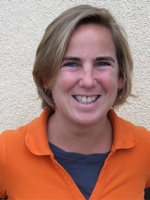
bschroefelbauer@nullucsd.edu
Office: NSB 3318
Phone: 858-822-4673
Ph.D. Molecular Biology, Univ of Life Sciences (Austria) 2007
Ph.D. student, Salk Institute 2003-2006
M.S. Biotechnology, Univ of Life Sciences (Austria) 2002
Research Interests
Coming soon.
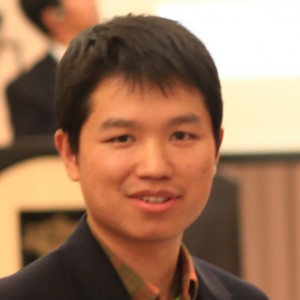
TITLE: Postdoctoral Research Fellow (2011 –
EMAIL: liuy6@nullucla.edu
OFFICE: Boyer 570
WEBSITE: http://liuyi.co
EDUCATION:
PhD Pathology, Case Western Reserve University, 2011
BS Biological Sciences, Peking University, 2005
Research Interests
I’m interested in the role of NF-kB signaling in hematopoiesis.
Tools
PyHRM: High Resolution Melt Analysis in Python (OpenSource)
NFkB gene: A list of NFkB (NFkappaB, NF-κB) target genes hosted on Github. Curated based on Dr. Thomas Gilmore’s list.
Publications
Koushik Roy, Simon Mitchell, Yi Liu, Sho Ohta, Yu-sheng Lin, Marie Oliver Metzig, Stephen L Nutt and Alexander Hoffmann. 2019. The switch from B-cell proliferation to plasma cell differentiation phases requires dynamic NFκB/cRel downregulation. Immunity. PMID: 30850343
Wen-Hsien Liu, Seung Goo Kang, Zhe Huang, Cheng-Jang Wu, Hyun Yong Jin, Christian J. Maine, Yi Liu, Jovan Shepherd, Mohsen Sabouri-Ghomi, Alicia Gonzalez-Martin, Shunbin Xu, Alexander Hoffmann, Ye Zheng, Li-Fan Lu, Nengming Xiao, Guo Fu and Changchun Xiao. 2016. A miR-155–Peli1–c-Rel pathway controls the generation and function of T follicular helper cells. J. Ex. Med. PMID: 27481129
Almaden JV, Liu YC, Yang E, Otero D, Birnbaum H, Davis-Turak J, Asagiri M, David M, Goldrath AW and Hoffmann A. 2016. B cell survival and development controlled by the coordination of NFκB family members RelB and cRel. Blood. PMID: 26773039
Almaden JV, Tsui R, Liu YC, Birnbaum H, Shokhirev MN, Ngo KA, Davis-Turak JC, Otero D, Basak S, Rickert RC, Hoffmann A. 2014. A Pathway Switch Directs BAFF Signaling to Distinct NFκB Transcription Factors in Maturing and Proliferating B Cells. Cell Rep. PMID: 25497099
Liu YC, Simmons DP, Li X, Abbott DW, Boom WH, Harding CV. 2012. TLR2 Signaling Depletes IRAK1 and Inhibits Induction of Type I IFN by TLR7/9. J. Immunology. PMID: 22227568
Simmons DP, Wearsch PA, Canaday DH, Meyerson HJ, Liu YC, Wang Y, Boom WH, Harding CV. 2012. Type I interferon drives a distinctive dendritic cell maturation phenotype that allows continued class II MHC synthesis and antigen processing. J. Immunology. PMID: 22371391
Liu YC, Gray RC, Hardy GA, Kuchtey J, Abbott DW, Emancipator SN, Harding CV. 2010. CpG-B oligodeoxynucleotides inhibit TLR-dependent and -independent induction of type I IFN in dendritic cells. J. Immunology. PMID: 20181884
Simmons DP, Canaday DH, Liu Y, Li Q, Huang A, Boom WH, Harding CV. 2010. Mycobacterium tuberculosis and TLR2 agonists inhibit induction of type I IFN and class I MHC antigen cross processing by TLR9. J. Immunology. PMID: 20660347
Anis MM, Fulton SA, Reba SM, Liu Y, Harding CV, Boom WH. 2008. Modulation of pulmonary dendritic cell function during mycobacterial infection. Infect. Immun. PMID: 18039834
Pennini ME, Liu Y, Yang J, Croniger CM, Boom WH, Harding CV. 2007. CCAAT/enhancer-binding protein beta and delta binding to CIITA promoters is associated with the inhibition of CIITA expression in response to Mtb 19-kDa lipoprotein. J. Immunology PMID: 17982082
Li L, Bin LH, Li F, Liu Y, Chen D, Zhai Z, Shu HB. 2005. TRIP6 is a RIP2-associated common signaling component of multiple NF-kappaB activation pathways. J. Cell Sciences PMID: 15657077


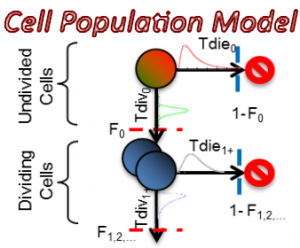
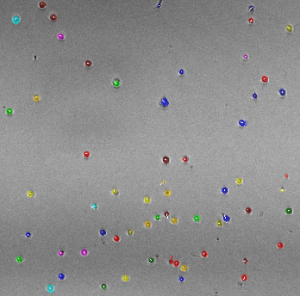
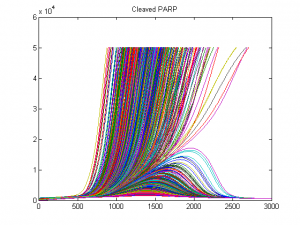
 dnrios@nullucsd.edu
dnrios@nullucsd.edu










